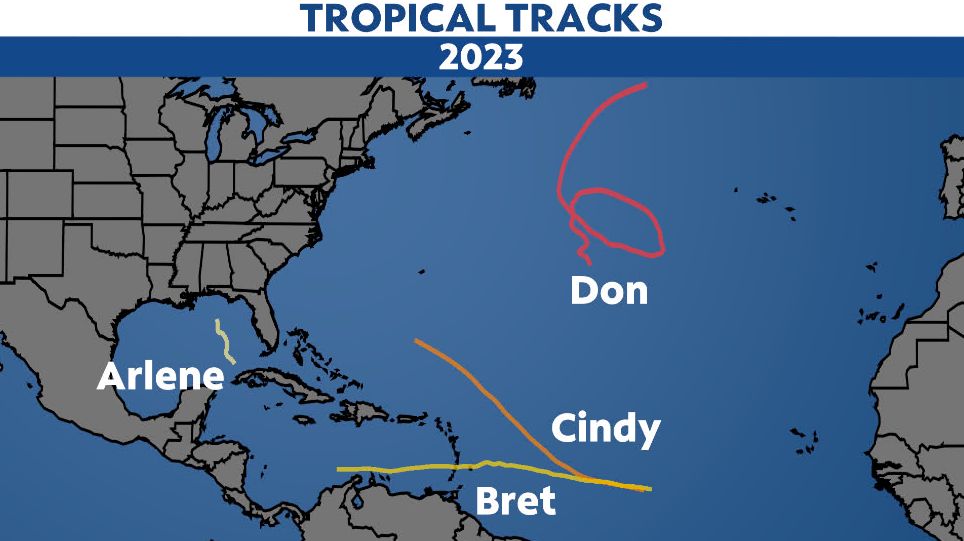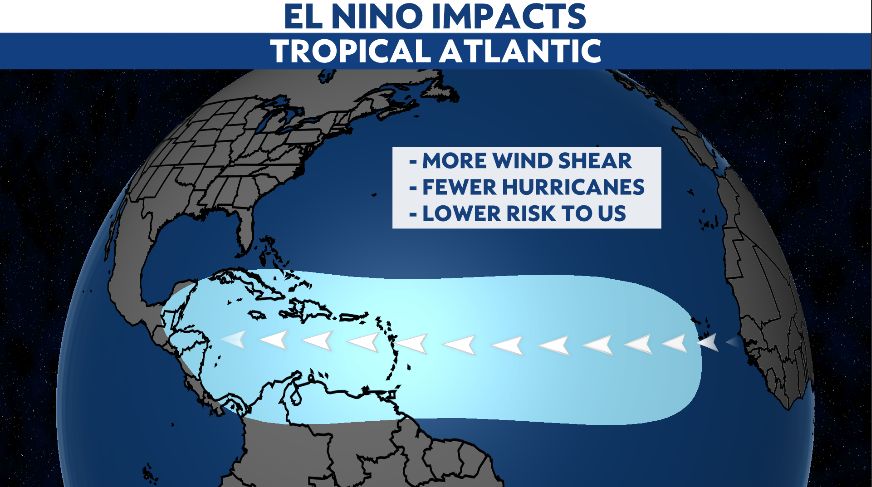Atlantic hurricane season is entering the historical peak of activity, between August and October, and NOAA has updated its outlook for this year. NOAA predicts an above normal hurricane season.
NOAA's outlook predicts a 60% chance of an above normal season, a 25% chance of a near normal season and a 15% chance of a below normal season.
NOAA forecasts a likely range of 14 to 21 named storms, of which 6 to 11 could become hurricanes, including 2 to 5 major hurricanes, which are a Category 3 or higher on the Saffir-Simpson Hurricane Wind Scale.
NOAA provides these ranges with a 70% confidence.

Remember, predictions of the season’s activity are not predictions of exactly how many storms will make landfall in a particular place. Individual storms make impacts, regardless of how active (or not) a season is. Coastal residents should do what they can to make sure they're prepared every year.
So far this year, we've seen four named storms and one hurricane. NHC also determined that a subtropical storm formed in January off the coast of the Northeast U.S., but the agency will not retroactively give it a name.

Don was the sole storm that became a Category 1 hurricane in late July. No storms have formed since then, but the next name on the list is Emily.
As a reminder, this season has brought some new changes and a new list of names.
You can learn more about 2023's list of names here.
Researchers look at a variety of factors to make their prediction.
El Niño conditions have returned this summer, which is the first time since 2018 and 2019. El Niño leads to stronger upper level winds, or wind shear, in the Atlantic, which is less favorable for tropical development.

On the other hand, sea surface temperatures have increased to well above normal in the Gulf of Mexico and the tropical Atlantic, including the main development region. The warm ocean water helps fuel tropical systems, which could help counteract some of El Niño's influence.
Learn More About Hurricanes
Our team of meteorologists dives deep into the science of weather and breaks down timely weather data and information. To view more weather and climate stories, check out our weather blogs section.




